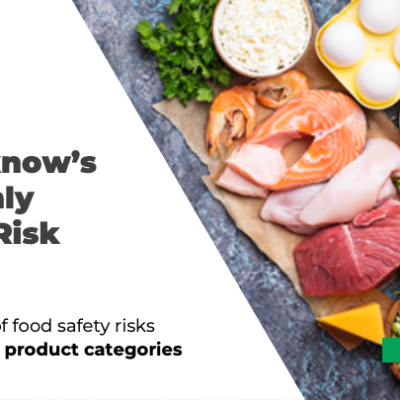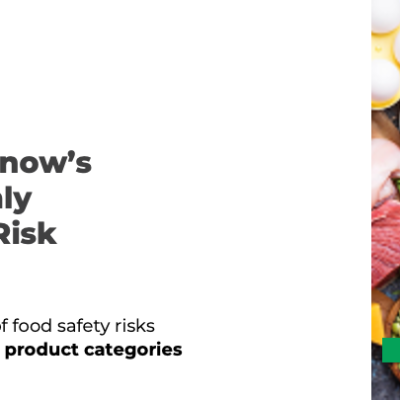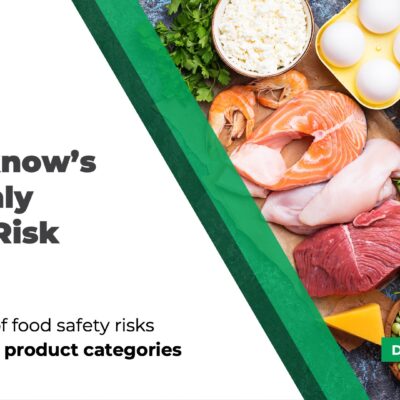
Mitigating hazards in the soft drinks industry by sharing what we learned

Our previous two articles explored hazard trends within the non-alcoholic beverages market and an in-depth look at emerging hazards in the juice drinks industry. This article will examine how we can identify and overcome the hidden hazards associated with soft drinks by harnessing intelligent insights.
The soft drinks beverage sector plays a key role in the global economy, but let’s not forget that there is a large number of raw materials that are included as part of the key ingredients, each with its associated hazards.
Soft drink's key ingredients typically contain:
- water,
- sweetener(s) (8 – 12%, w/v),
- carbon dioxide (0.3 to 0.6% w/v),
- acidulants (0.05 to 0.3% w/v),
- flavorings (0.1 to 0.5% w/v),
- colorings (0 to 70 ppm),
- chemical preservatives (at authorized levels depending on the compound and the type of soft drink)
- antioxidants (<100 ppm)
- foaming agents, for example, saponins (up to 200 mg/mL).
Through using more than 190.000 food recalls and border rejections, millions of laboratory testing results, inspections, and global country indicators that we collect from multiple open sources such as government institutions and industry reports, we are able to provide an overview of the key hazards associated with soft drinks that should be known to all food safety professionals. The following insights are part of our robust five-year risk analysis report.

The most crucial ingredient of any soft drink is water, making up 94% of the final product. To mitigate the risk of impurities in the water, it must be cleaned and set to the most optimal pH levels. The pH level must balance out the pH levels of other ingredients so as not to affect the taste. Water presents an overall low risk, with the bacterial pathogen Pseudomonas aeruginosa being the top-ranking hazard. Pseudomonas aeruginosa is also the top hazard for bottled water, with 32 incidents occurring in the last 20 years.
Additives are traditionally used in very small quantities, enhancing the appearance of soft drinks: the emulsion; the aroma, and how it feels in the mouth. Over the last few decades, additives are used from their natural origin. The occurrence of milk and milk products constitutes the top hazard for additives, followed by eggs and egg products, salmonella, cereals containing gluten and its related products, and mustard and its related products.

Food coloring agents are common ingredients in soft drinks, used to stabilize their appearance. The top-ranking risk for this additive category, namely salmonella enterica, is very uncommon in soft drinks. However, our incident analysis shows that a bacterial pathogen is sometimes introduced during the manufacturing process, due to a lack of personal hygiene. The hazard landscape in relation to food coloring agents also includes instances around the presence of high content of copper, unauthorized color orange 1, unauthorized color rhodamine B, and unauthorized color sudan 1.

Sugar in non-alcoholic beverages can be used both in dry or liquid form, often responsible for 7-12% of the contents of soft drinks bottles or cans. Its presence increases not only the sweetness of the drink but also balances the acids and flavors used. The most critical hazard according to our risk analysis is foreign bodies, such as pieces of metal. The second most critical hazard is hazelnuts, then benzoic acid, molds, and high cyanide content.
Flavorings are either artificial, used to boost or balance the taste that is created by other ingredients, or natural – in powder or jelly form. Contamination with milk and relevant milk products is the highest hazard in the flavorings category, closely followed by pieces of metal, lead, and unauthorized genetically modified substances.

For food safety professionals to overcome the hazards associated with the key ingredients in the soft drinks supply chain (and in any food supply chain) they must harness data from multiple sources on the key hazards, data that is highly scattered, heterogeneous, multilingual, and disconnected. To integrate all this data, a significant amount of time and special effort are needed. In addition to data, today there are systems, tools, and platforms available that can help in risk assessment. We have analyzed in a previous article how a live risk assessment can be performed. This will help them achieve greater visibility across the global supply chain.
Drawing on intelligent insights to stay informed about common and emerging hazards, it’s essential that food safety and quality assurance managers set up an adaptive Supplier Verification process based on this information. Critical hazard data will help food safety professionals prepare internal procedures for incoming materials and ingredients, e.g. raw materials, packaging materials, and enable adaptive laboratory testing routines and compliance protocols.
Moreover, food safety professionals can use hazard data insights to quickly update points of critical control when needed and intervene at important stages of the drinks manufacturing process.
If you’d like to discover how FOODAKAI can help your Food Safety & Quality team prevent product recalls by monitoring & predicting risks, schedule a call with us!






